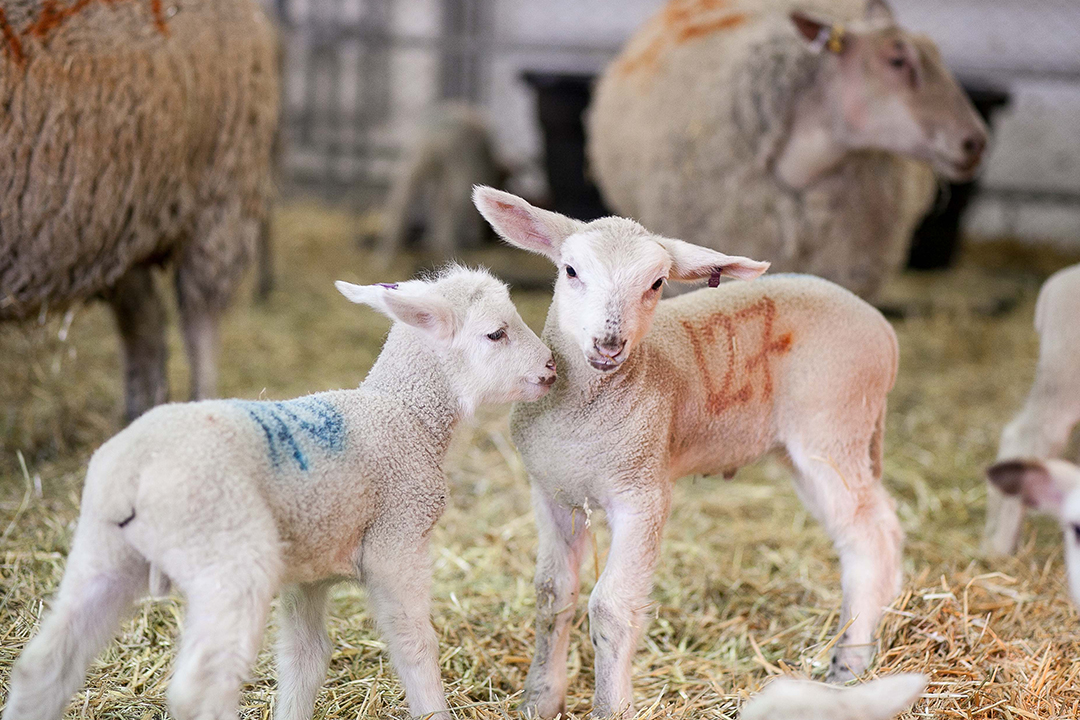
Rams’ breeding soundness key to sheep flock health
Researchers at the University of Saskatchewan (USask) and Agriculture and Agri-Food Canada (AAFC) are working to update the ram breeding soundness evaluation guidelines so they represent specific sheep breeds raised in Western Canada.
By Jessica ColbyThe research team is evaluating four different breeds that are part of the industry in Canada’s Prairie provinces: Canadian Arcott, Rideau Arcott, Dorset and Suffolk.
“This will be a unique study because we are studying four breeds at a time,” says Dr. Muhammad Anzar, a research specialist in cryobiology at the AAFC and a co-investigator in this project. “Normally researchers do studies … from a single breed or two breeds, but four breeds will be included in this study.”
Ram breeding soundness guidelines are very important when it comes to ensuring success for populating a sheep flock.
“The ram breeding soundness evaluation (BSE) is composed of assessing whether the ram is physically able to perform a breeding and would likely get most ewes pregnant,” says Dr. Dinesh Dadarwal, a theriogenologist (reproduction specialist) in the Western College of Veterinary Medicine’s (WCVM) Department of Large Animal Clinical Sciences and the study’s lead investigator.
Anzar adds that despite the growth in Canada’s sheep industry, reproduction has not been studied as thoroughly in the species as it has been in cattle and in other food animals.
“It would be a good contribution to the sheep industry if we develop the selection parameters, which are deliverables to the farmers, so that they … can assess the breeding soundness or the fertility potential of their rams before introducing them in the actual breeding program,” says Anzar.
A ram’s physical exam consists of evaluating whether the male sheep can walk, eat and see normally. The second part is a reproductive exam, where the ram’s scrotal circumference and semen quality are assessed to see if they meet selection criteria.
“The current criteria are set for the breeding season, mainly from September all the way to February or March,” says Dadarwal.
Dadarwal says the current guidelines need updating because they are for the entire sheep species and not specific to certain breeds. According to the Canadian Sheep Breeders Guide, there are nearly 50 sheep breeds across the country.
“We have not accounted for the differences between the breeds with regards to when they attain puberty,” says Dadarwal. “So, a heavy body weight might actually attain the minimum criteria early on compared to a lighter breed.”
As well, the current ram breeding soundness criteria only pertains to the breeding season, which occurs from September to March. There are no guidelines covering the off-breeding season, which includes the time period between April and August.
The team is aiming to describe the ram breeding soundness criteria for each of the four breeds during and outside the breeding season.
“As an example, a ram’s scrotal circumference might be 34 to 35 centimetres … during the breeding season. When … you re-examine the scrotal size outside the breeding season, you’ll be surprised that it might only measure 24 centimetres,” says Dadarwal.
“There will be a period when we should not be using these rams for breeding because their semen quality may be so low that it will result in poor pregnancy rate.”
He adds that if the rams are not evaluated before breeding, it could result in more open (non-pregnant) ewes, which will cause economic losses for the producer.
Because the climate in Canada’s Prairie region is unique compared to the rest of the country, Anzar says having more specific regional guidelines is even more important.
“Under these western Canadian conditions, no comprehensive work has been done,” says Anzar. “We’ll be focusing on Western Canada — Manitoba, Saskatchewan and Alberta — which is colder as compared to the rest of Canada.”
“By the end of this project, I am hoping that the majority of the producers will accept the revised guidelines as a routine practice for their flocks,” says Dadarwal.
The Saskatchewan Agriculture Development Fund (ADF) provided funding for this study.
Jessica Colby of Montmartre, Sask., is a fourth-year student in the University of Regina’s School of Journalism. She was a research communications intern at the Western College of Veterinary Medicine (WCVM) in 2021.

